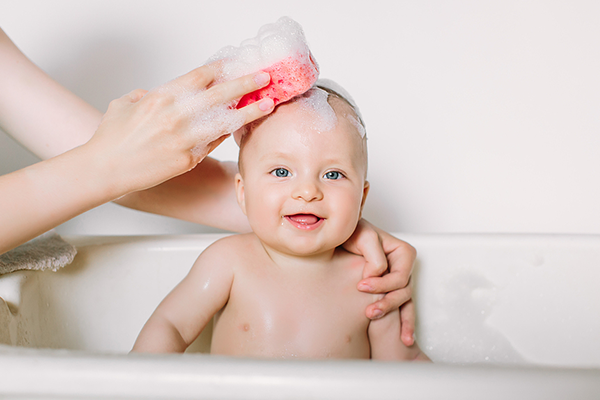Scrub-a-dub dub, it’s bath time for baby. Before you prepare the bath, remember these six general tips to keep it a safe, enjoyable ritual for both of you.
1. Start With Sponge Baths.
Your pediatrician may suggest sticking to sponge baths until your baby’s umbilical cord stump falls off. Give the cord one or two weeks to fall off before submerging your baby in water. Until then, use a warm, damp cloth to wash your baby only with water, starting at the face and ending with the buttocks.
2. Always Check the Water Temperature.
When your child is ready for regular baths, you’ll want to fill a baby bathtub or sink with warm water. Test the temperature with your wrist or inside of your elbow to ensure it’s not too hot.
3. Use a Mild Soap, Sparingly.
Harsh soaps can dry out your baby’s delicate skin. Instead, try using a mild, unscented soap, but only on very soiled areas. Rinse off well. You can also completely skip the soap, if you wish, and use only water.
4. Cleanse Gently.
Wash your child with a soft washcloth. Take care not to scrub, tug or pull at your baby’s skin. Even if you use a gentle baby shampoo, make sure to shield his eyes while rinsing.
5. Follow Cues.
If your newborn loves bath time, don’t rush and let her enjoy it. If she doesn’t, try gradually working her up to it with continued sponge baths, which makes the process quick and—hopefully—tear free .
6. Dry and Lotion Up.
Wrap your baby from head-to-toe in a dry towel after bath time to keep him warm. Pat your baby dry. Then apply a fragrance-free lotion to prevent dry skin.
How Often Do Newborns Need a Bath?
Your baby’s first bath should be at least 24 hours after birth. Delaying the first bath gives you more time for skin-to-skin contact, which can promote breastfeeding success. It also keeps your baby calm, protects the baby’s skin and reduces hypothermia risk.
Newborns should receive regular baths, but not every day. In fact, bathing your newborn daily may dry out the baby’s skin. Stick to three baths per week during your baby’s first year.




